In the era following the World War II, the typical Big Man On Campus fit a profile:
Tall. Good looking. Athletic. Star in sports. Quarterback on the football team. Acted in senior play. Prom king.
San Diego High’s Gerald (Jerry) Dahms checked all boxes in this postwar, San Diego football era. And the era was about high school football, reflecting the optimism and promise embraced by a revitalized country.
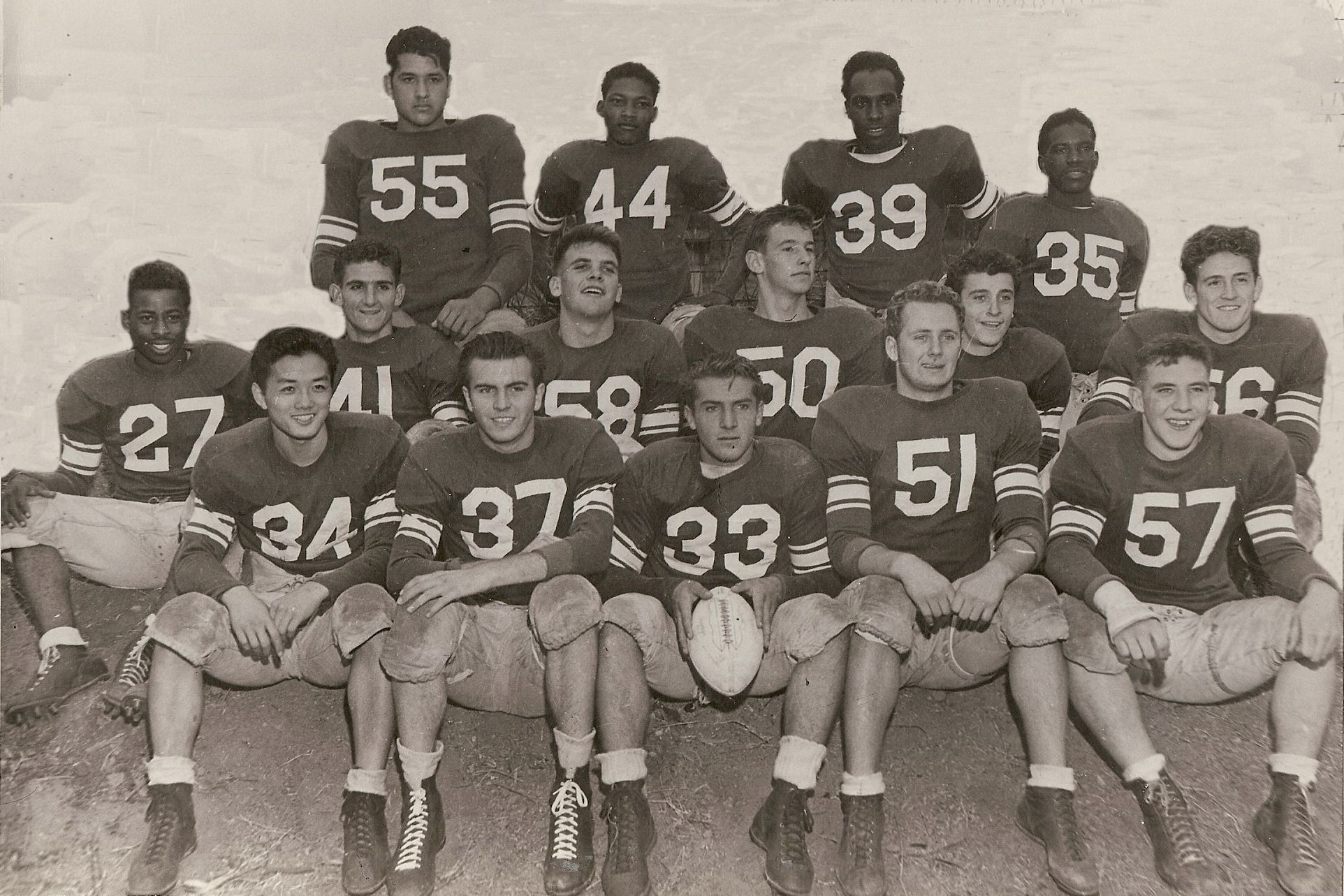
St. Augustine alumnus Gene Earl, the prep writer for The San Diego Union, apparently was caught up in it all when he declared that a crowd of more than 30,000 had packed Balboa Stadium for the opening of the season and the eighth annual football carnival.
The euphoric Earl’s pronouncement strained credibility. Listed seating capacity for Balboa Stadium had been estimated at between 23,000 and 25,000 persons since it was constructed in 1914.
There were seat backs in a few sections, but the concrete bowl essentially had no identifiable seat locations. Turnstiles and actual ticket counters probably didn’t exist.
Just how many could fit into Balboa Stadium will never be known, but Earl’s assumption may not have been that far-fetched. Cue existential factors.
—The only other team spectator choices for sports-starved fans in the county of 362,000 residents were the Pacific Coast League Padres’ baseball, minor league pro football, low-level San Diego State football, Coliseum boxing and wrestling, and minor league hockey.
—Balboa Stadium was located not far from many of the military facilities in San Diego and servicemen frequented high school games in large numbers.
—Several thousand students reveled in the carnival’s football and pageantry and didn’t mind sitting cheek to jowl on a fun-filled Friday night.
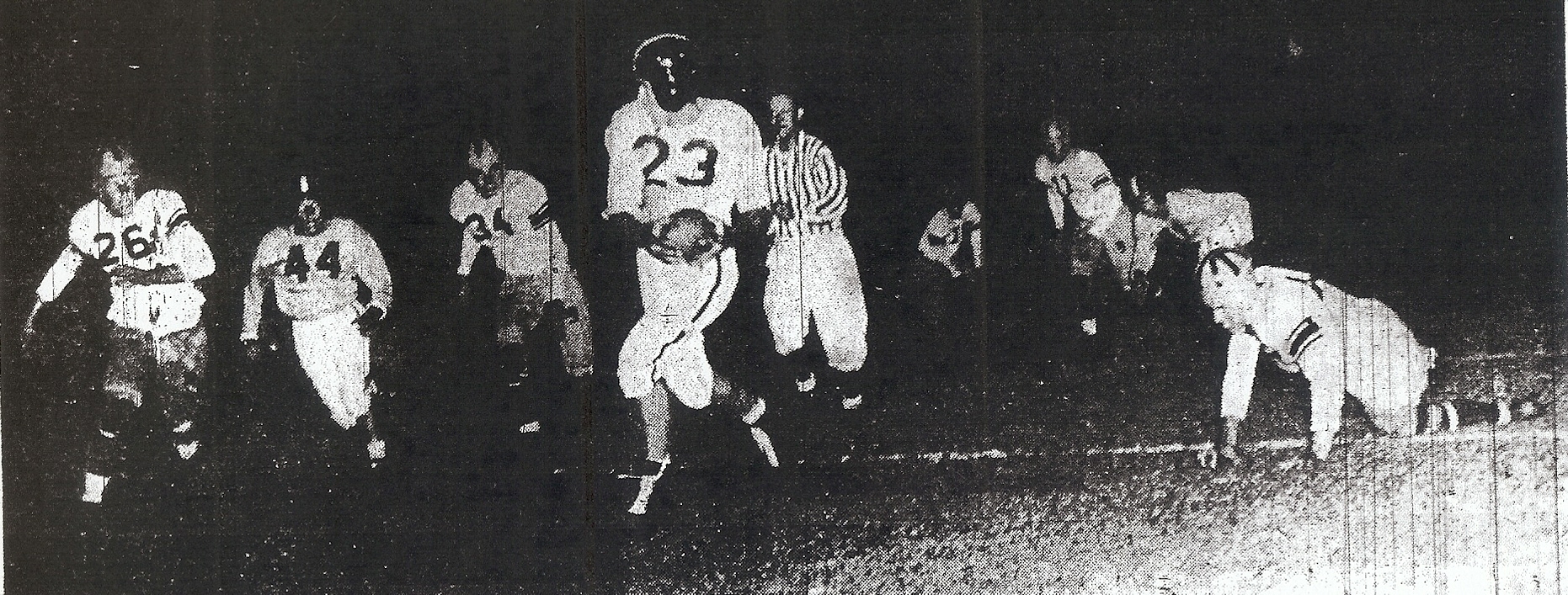
—There was precedent for big crowds at the carnival and at the annual San Diego-Hoover game. Bob Angus of the Evening Tribune wasn’t in strong disagreement with Earl. Angus, a San Diego High graduate, described “an overflow crowd of 27,000.”
The “Russ”, San Diego High’s school newspaper, estimated the crowd at “more than 28,000.”
—Football was being celebrated all over the country. The carnival marked the official coming out date of the season.
Maybe there were 30,000 persons there; it still would be a San Diego prep record.
DAD MADE PASTRIES
The San Diego High Cavemen were at the center of this universe and the Hillers revolved around the 6-foot, 3-inch, 190-pound Dahms, one of seven sons and daughters of a San Diego baker.
Dahms started throwing a football as a youngster growing up near the intersection of 25th Street, Ocean View Boulevard, and Commercial Street in Logan Heights but he didn’t become a quarterback until San Diego coach Bill Bailey had a vision.
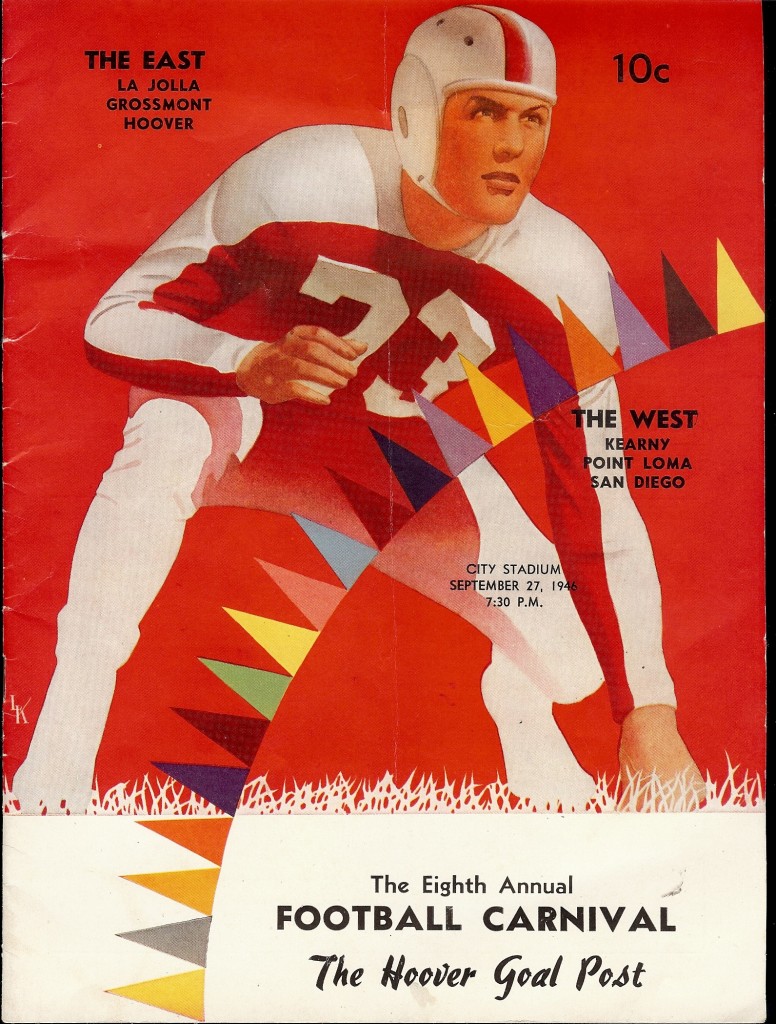
Bailey moved Dahms from tackle to quarterback near the end of Dahms’ junior year when the Cavers turned out for spring practice. “Spring practice in those days was a full-blown deal,” Dahms remembered.
The position change agreed with the 16-year-old senior-to-be who also was a standout in basketball and would play professional baseball.
Dahms took charge in the carnival by completing 6 of 8 passes and connecting with Dick Savoy on a 25-yard touchdown pass and passing to John Holloway for the point after.
The Hillers outscored Hoover 13-0 in the third and final, 15-minute segment. The West, with San Diego, Kearny, and Point Loma, defeated the East’s Grossmont, La Jolla, and Hoover, 19-6.
SUITS COACH TO A T
“Dahms was better than I thought he’d be,” said Bailey, who saw the Memorial Junior high graduate as the ideal leader for his T Formation offense. “He was cool under fire and alert on defense (linebacker).”
Dahms had beaten out Jim Marinos, who also would see action and who was no pedestrian. Marinos started at quarterback for the University of California’s 1951 Rose Bowl team.
“I always had a pretty good arm, but I was surprised, amazed really, when Bailey said to me, ‘You’re going to be our quarterback,'” recalled Dahms in 2012, living in retirement on Point Loma. “When Jimmy was in the game I would move back to left tackle and still call the plays in the huddle.”
The Cavers had gone to the T formation in 1944. Bill Bailey had been a single wing coach at Point Loma High before he replaced the T-oriented Joe Beerkle at San Diego in 1943.
Bailey’s thinking undoubtedly was influenced by the Washington Redskins and quarterback Sammy Baugh, who had trained in San Diego and practiced on the Cavers’ upper field before an Al Bahr Shrine intrasquad game in August, 1944, in Balboa Stadium.
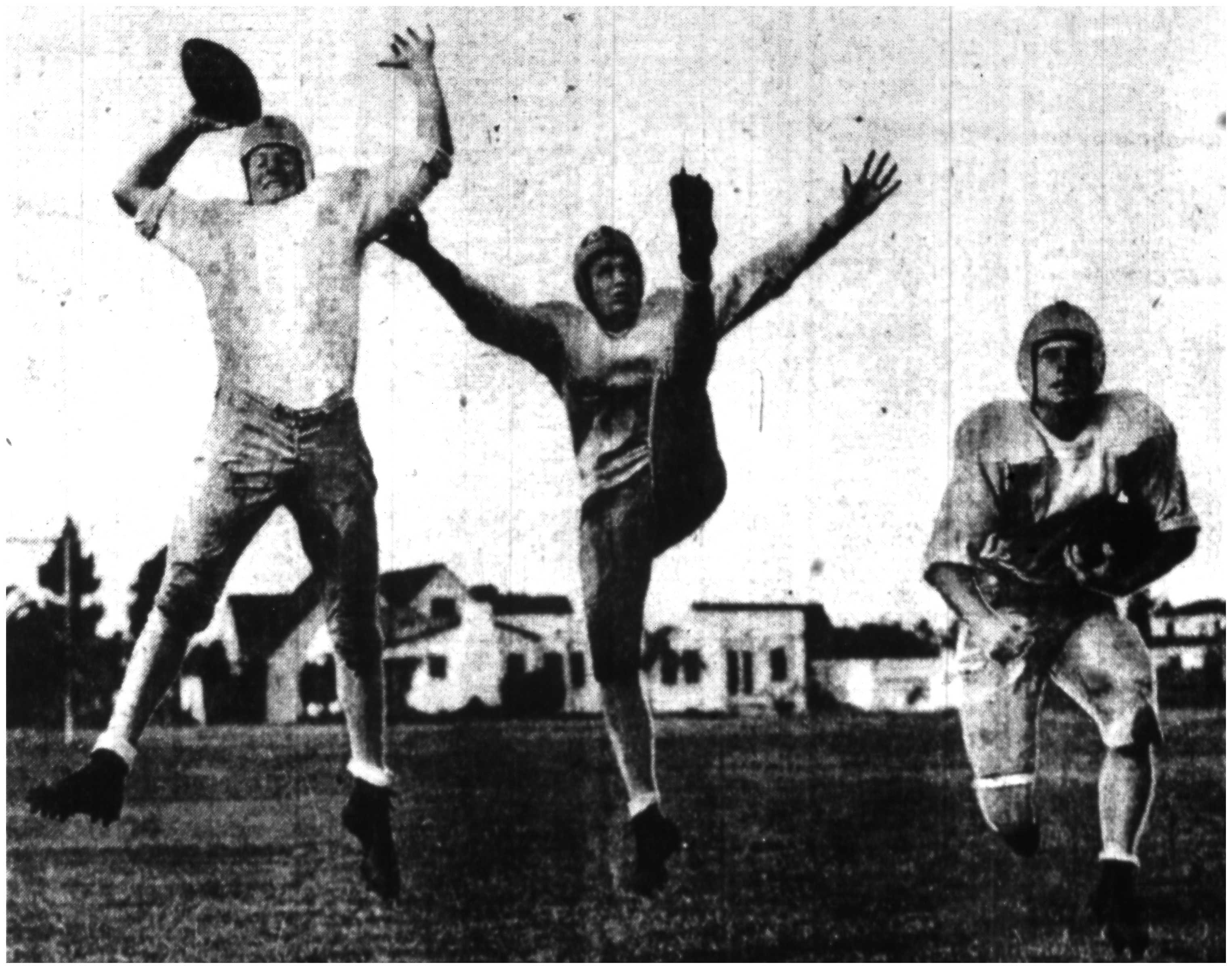
“Coach Bailey met Clark Shaughnessy,” said Dahms, referring to the Hall of Fame coach who served as an advisor to Redskins mentor Dudley DeGroot, who lived in El Cajon when he passed in 1970.
Shaughnessy once was described as a peevish, by-football-possessed, absent-minded professor.
Shaughnessy allegedly was pulled over by police as he was driving in West Los Angeles.
Legend has it that cops in a passing black and white spotted an elderly gentleman diagramming what looked like football plays on the windshield of his car as it weaved in an out of traffic on foggy Olympic Boulevard.
Shaughnessy, who is credited with creating the modern T formation with which his Stanford team upset Nebraska in the 1941 Rose Bowl, graciously spent time with Bailey, imparting his wisdom and knowledge of the formation that changed football forever.
THE CROWDS, THEY FLOCKED!
Fans wanted football, especially San Diego High football.
There were 13,000 in Balboa Stadium for the season opener with Al Pollard and the Loyola Cubs and 20,000 two months later in a rematch in the Southern California playoffs.
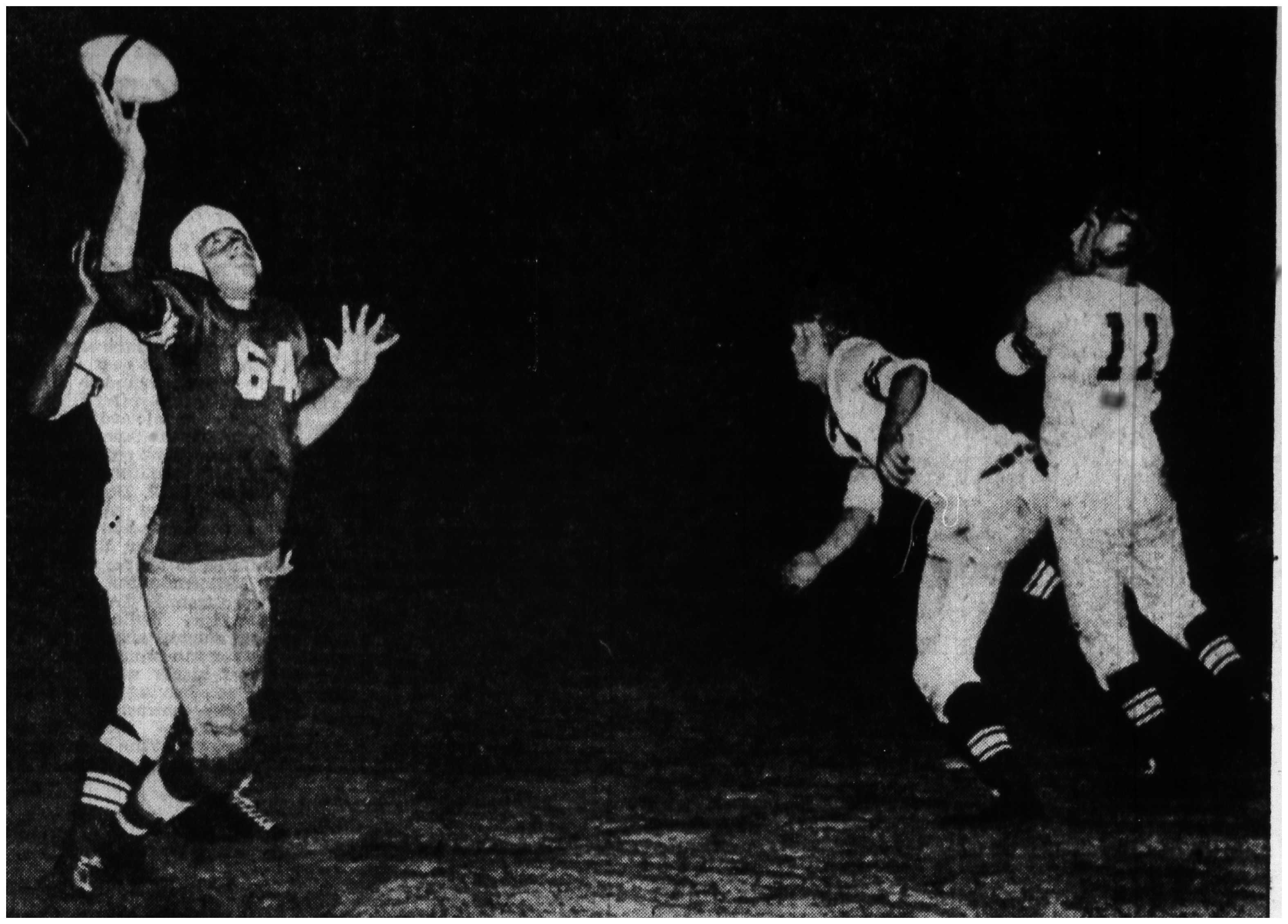
San Diego drew 9,000 fans each for nonleague games against St. Augustine and Bakersfield. And the “Street Car Classic” with crosstown rival Hoover brought in 19,000.
St. Augustine was edged 7-6 in one quarter by Santa Monica St. Monica in the Southland Catholic League Carnival at Gilmore Stadium in Los Angeles. That event, with Al Pollard and Loyola leading the way, was played before a crowd of 12,500.
BACK TO THE FUTURE
The 1946 season meant that San Diego would reacquaint with an old friend as it resumed play in the Coast League, which the Hilltoppers had joined in 1923 but which suspended operation from 1941-45.
Schools throughout California were travel-restricted during the war. The Cavers and others in the area formed the Victory League.
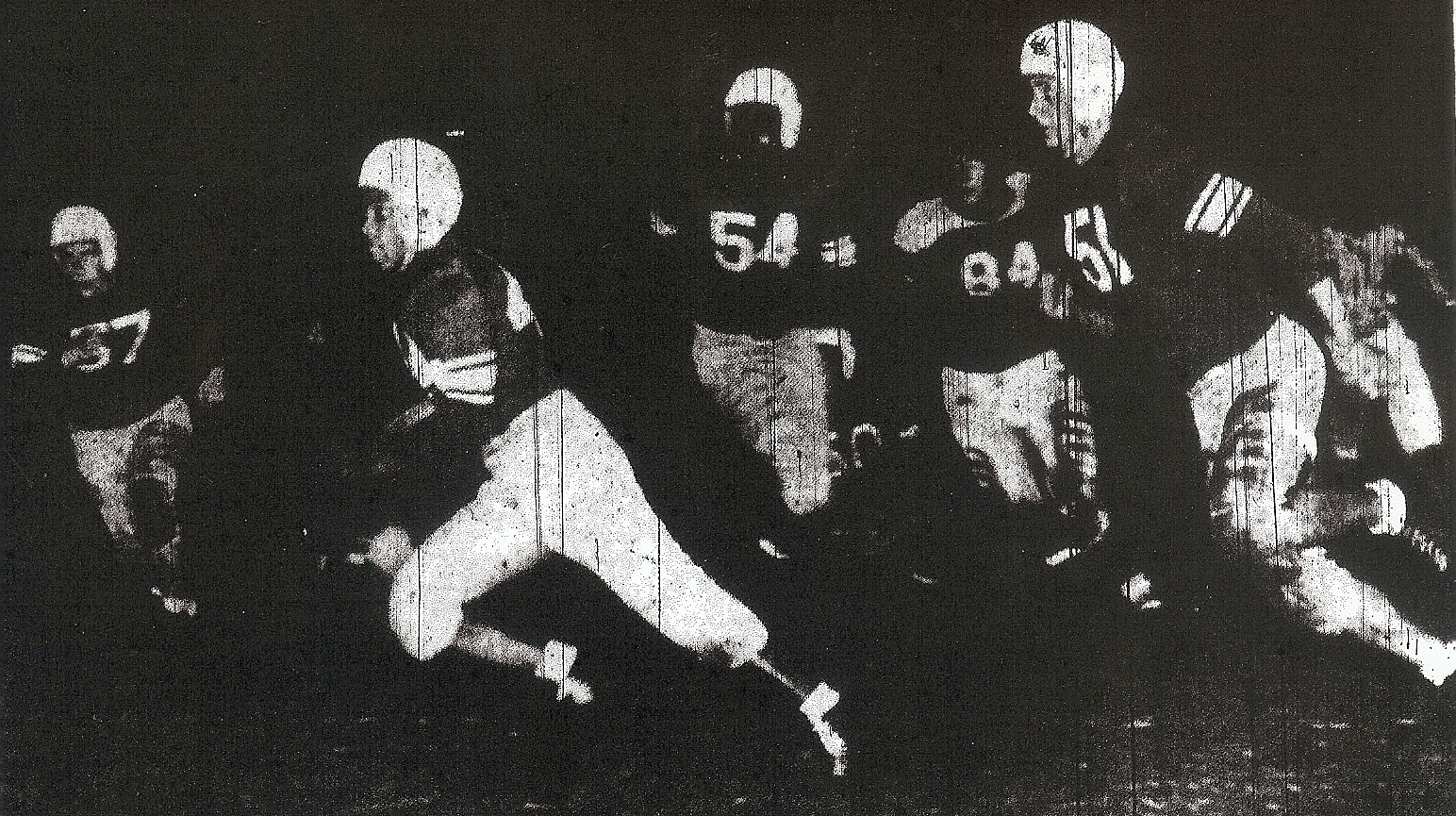
San Diego dominated the postwar alignment, outscoring Compton, Hoover, and Pasadena by a combined score of 107-20. They also defeated Phoenix Union, 14-0, Bakersfield 13-7 and St. Augustine 32-0. It was an impressive run through a strong, intersectional schedule.
BUT NOT ENOUGH
Loyola was the Hillers’ undoing.
The Cubs were led by Al Pollard, the 1945 Southern California player of the year, a fast game-breaker who would play in the NFL and was more than a match for the Cavers.
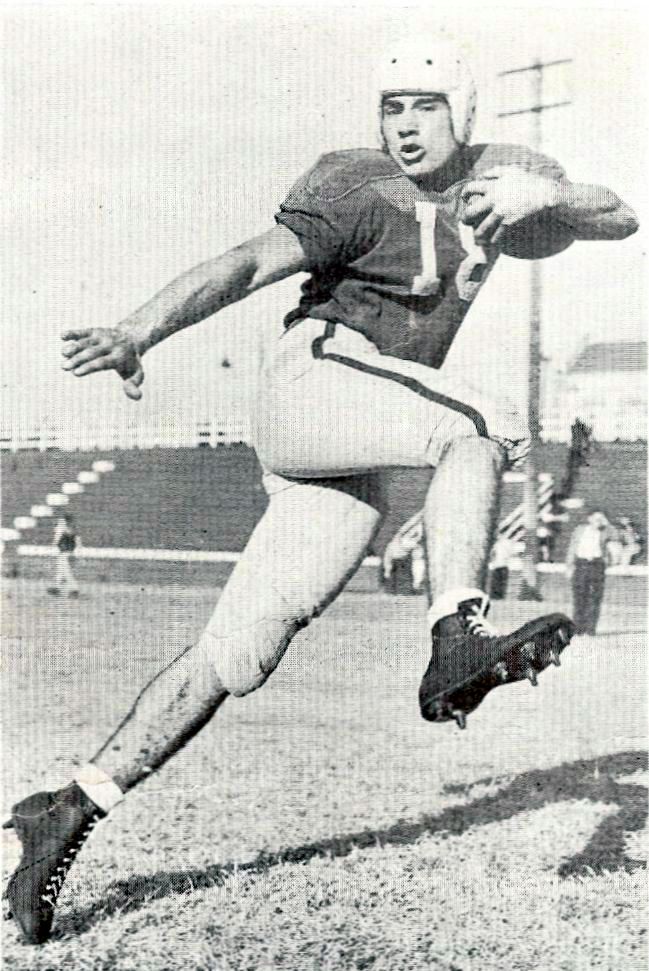
Loyola won the first meeting, 13-12, as Pollard scored touchdowns on runs of 41 and 88 yards and kicked an extra point.
Pollard’s longest run was a crusher for the Cavemen in the third quarter.
Lined up in short punt formation on fourth down at his 12-yard line, Pollard swept his flank and went the distance, then kicked what turned out to be the game-deciding extra point.
A 50-yard pass, Dahms to Sal Macias, put the Cavers on the two-yard line, but the game ended when they were stopped on the next play.
San Diego won a telephonic coin flip in the office of Southern Section commissioner Seth Van Patten to host the rematch in the first round of the Southern Section playoffs. Most of the 20,000 in attendance only heard of Pollard’s exploits. Fog was so thick spectators saw nothing more than sideline stripes.
As the San Diego cheering section was heard through the mist, loudly and demonstratively exhorting its team, “Cavemen, Go!”, the Cavers took an early lead, but Pollard broke a 6-6 tie with a 70-yard touchdown run, then added another 70-yard score as Loyola won, 19-6.
Aside from game officials, the stadium announcer, who followed play from the field, and fans who left their seats and sneaked on to the field, no one had more than an occasional glimpse of what was going on.
Several times play was halted while the gridiron was cleared of fans wandering into the playing area.
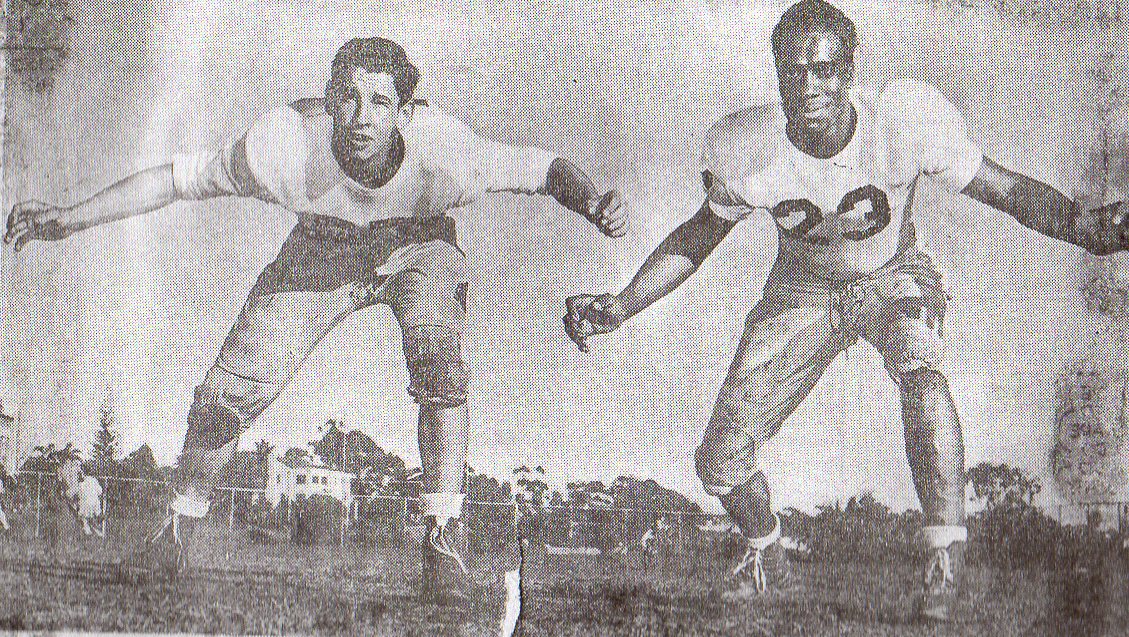
THE WIND BLEW
Point Loma, under first-year coach Don Giddings, stormed through the reunited Metropolitan League with a 6-0-1 record but declined to participate in the Southern California lower division playoffs.
Grossmont, which was 5-1-1 in the league and riding the late-season touchdown thrusts of Art Preston, accepted a bid and visited the 9-0 Central Spartans in El Centro.
Foothillers coach Jack Mashin ruminated about the game for years. His team led, 19-7, in the third quarter, but the winds of fate literally were in play, with gusts to 50 miles an hour.
Two Grossmont punts in the fourth quarter were almost blown back to the line of scrimmage, indirectly leading to two El Centro touchdowns and a 20-19 Spartans victory.
El Centro Central was declared the Lower Division Southern Group champion. Laguna Beach, which defeated Barstow 20-0, was the Central Group champion.
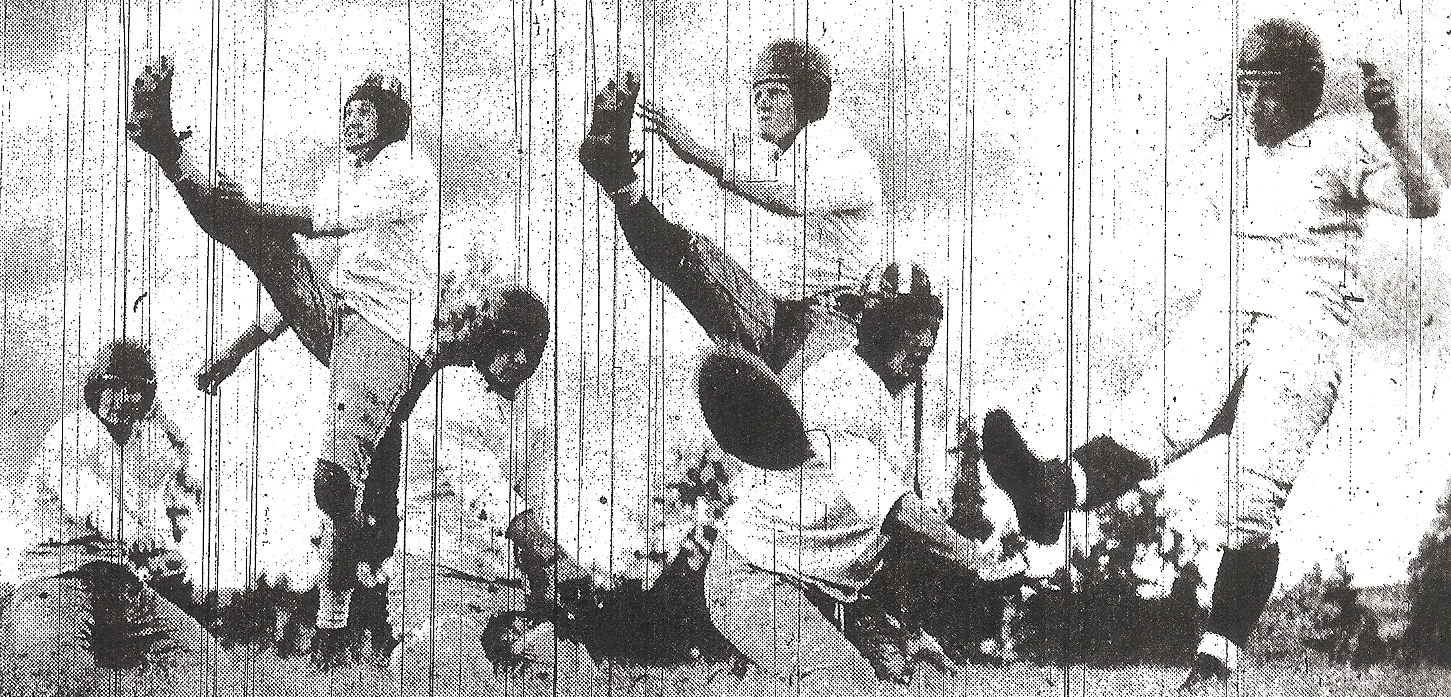
AFTER THE WAR
Grossmont was 6-3-1, representing its most victories since 1937. Jack Mashin, who would conclude a 25-season career after the 1947 campaign, had dominated old rival Escondido.
The Metropolitan League teams met every year from 1920-42, before the wartime hiatus. The series stood at 18-6-4 in the Foothillers’ favor after they scored two touchdowns in the last three minutes to forge a 13-13 tie.
Junior Art Preston scored 15 touchdowns in his last 6 games and ran away with the County scoring title with 120 points
UP IN THE AIR
The Cavers relied not only on Jerry Dahms’ aerial effectiveness but they also took to the air, flying to Phoenix in a precedent-setting trip for a San Diego County team. Hoover followed up later in the season when the Cardinals flew to Las Vegas.
The long rivalry with Phoenix Union, dating to 1923, had seen the evolution of transportation. Previous trips had been made by bus or by rail.
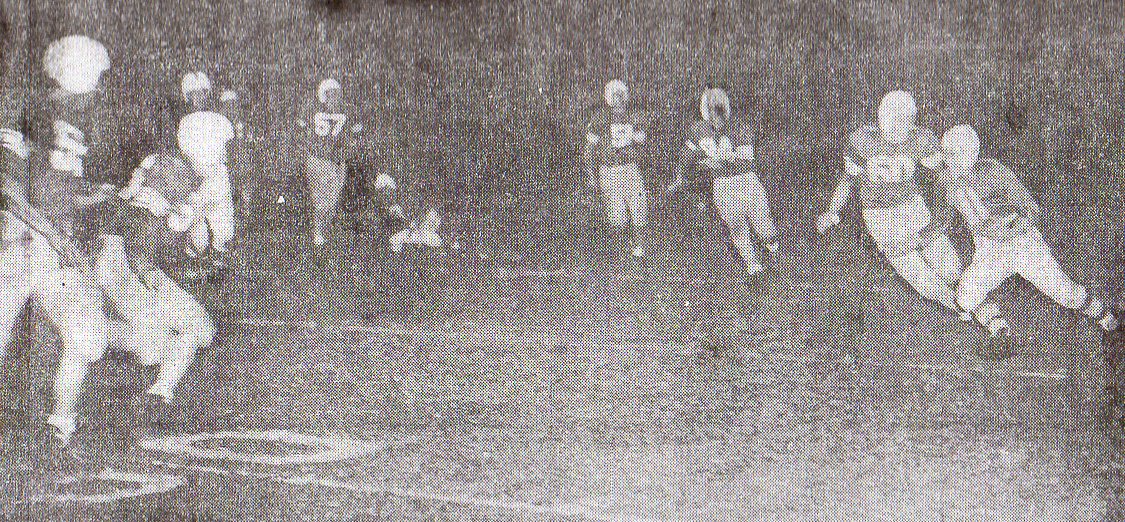
WATCH YOUR STEP!
Cavers coach Bill Bailey moved his team into Balboa Stadium the week of its Coast League opener with Compton. The upper practice field had “gone to the dogs”. The city had rented the space to a dog show and cleanup was taking longer than expected.
ENGLE PASSES ON AZTECS
Former Hoover star and future Hoover coach Roy Engle was scheduled to be an assistant coach at San Diego State, but suddenly resigned when an opportunity arose at USC.
Engle was one of five San Diego players on the Trojans’ 1940 Rose Bowl squad which defeated Tennessee 14-0.
HOW MANY?
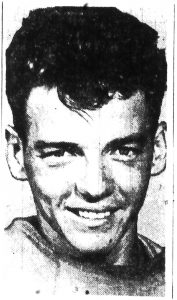
St. Augustine’s lefthanded quarterback, Jesse Thompson, completed 17 passes in a row in a 20-13 loss to Los Angeles Mt. Carmel.
“Jittery Jess”, who led the Saints to a 5-4 record and logged more miles than any local quarterback, was 17 for 23 overall.
The Saints spent many hours on U.S. 101 or 395 traveling to road games in the Los Angeles-based Southland Catholic League.
MAYBE IT WAS THE TRAVEL
By the first week in November, St. Augustine had lost 9 football players.
Discontent was apparent.
Halfback Charlie Jost was upset that he did not start the previous week at home against Santa Monica St. Monica. “I want no prima donnas on my club,” said Fr. William McDermott, the Saints’ coach.
“And there will be no use for Jost to try to get back on the Saints’ team,” McDermott added.

Halfback Dick Virissimo said he was transferring to Point Loma. Jost said he wanted to go to Hoover. Bill Burrows and Steve Cameron went into the Army. Joe LaBringha and Dick Betourne also left school. Ralph McGlinchy quit football, and John McGrath was killed in a cave-in.
The Saints had three games left, versus Long Beach St. Anthony, at Los Angeles Loyola, and at San Bernardino St. Bernadine.
Loyola, after drawing a money-making crowd against San Diego in Balboa Stadium in the first game of the season, volunteered to give up its home field to play the Saints in Balboa Stadium.
McDermott was unable to secure a date and the road game was on, and then was canceled because of “wet grounds” at the Cubs’ Los Angeles venue. It was a peculiar reason to scrub a football game.
SWITCH SIGNALS
Three days later an item appeared in the “Barber Chair” column in The San Diego Union, announcing that Jost “had a change of mind” and apparently was back in McDermott’s good graces.
HONORS
Jesse Thompson made the all-Southern California third team, along with tackle Emmett Hertz of Point Loma and guard Bill Stapp of Coronado. San Diego center Jim Erkenbeck was a second-team selection.
TRUE GRID
The coach at Coronado was the veteran Hal Niedermeyer….a candidate for the Islanders’ squad was Standlee Niemeyer…Grossmont principal Lewis Smith declined an invitation to join the school-strapped Coast League…tackle Bobby Toft, not yet 15 years of age, was a 194-pound starter for Kearny…reporting players were in huge numbers, led by San Diego, which had 135 check out equipment for varsity, JV, and sophomore squads…San Diego was contracted to play eight regular-season games but Fresno High, a strong Central Section entry, pulled out, citing “too strong a schedule”… Cedric Durst, Jr., son of the San Diego Padres’ manager, was a football candidate at Point Loma…Victor Camacho was the fifth member of his family to turn out at Sweetwater… Hal Smith, new coach at Kearny, described his club as “small and green.”… the third-year school posted its best record, 3-5… La Jolla boasted size with John Vierra and Glen Lindblade, each a 280-pounder… center Lou Errecca was back in school at Hoover, after spending 1945 in the Navy… 8,000 persons were on hand the night before the carnival as St. Augustine defeated Coronado 19-13 in the season’s first game… Don Giddings at Point Loma was going against the grain, sticking to the single wing while other Metropolitan teams used the T formation…Bakersfield’s quarterback was future pro football Hall of Famer Frank Gifford…Hoover played nonleague and league games with Pasadena, winning the one that counted in the standings, 6-0… Hoover’s nonleague game against Pasadena Muir attracted 600 chilly fans to the 95,000-seat Rose Bowl… the 14-13 loss didn’t sit well with coach Lee Bogle, especially with the Cardinals being penalized more than 150 yards…his broken right hand in a cast and fighting an upset stomach, San Diego tackle Gene Edwards reportedly was in on almost every play at Compton… a crowd of 2,000 saw title-clinching San Dieguito rout Vista 39-0 before the largest turnout in the Southern Prep League… “We’re as good as Point Loma,” said Sweetwater coach Gordon Cox… the Red Devils dropped a 26-14 decision to the Pointers to finish 2-5-1…the Pointers were 7-0-1…Alhambra defeated Loyola and Al Pollard, 7-6, in the Southern Section championship before 23,285 persons in the Los Angeles Coliseum….tackle Bob Conklin of San Diego and end Bill McColl of Hoover were the only unanimous choices for the all-Coast League team…San Diego landed 10 players on the first and second teams….
PHOTO OPS
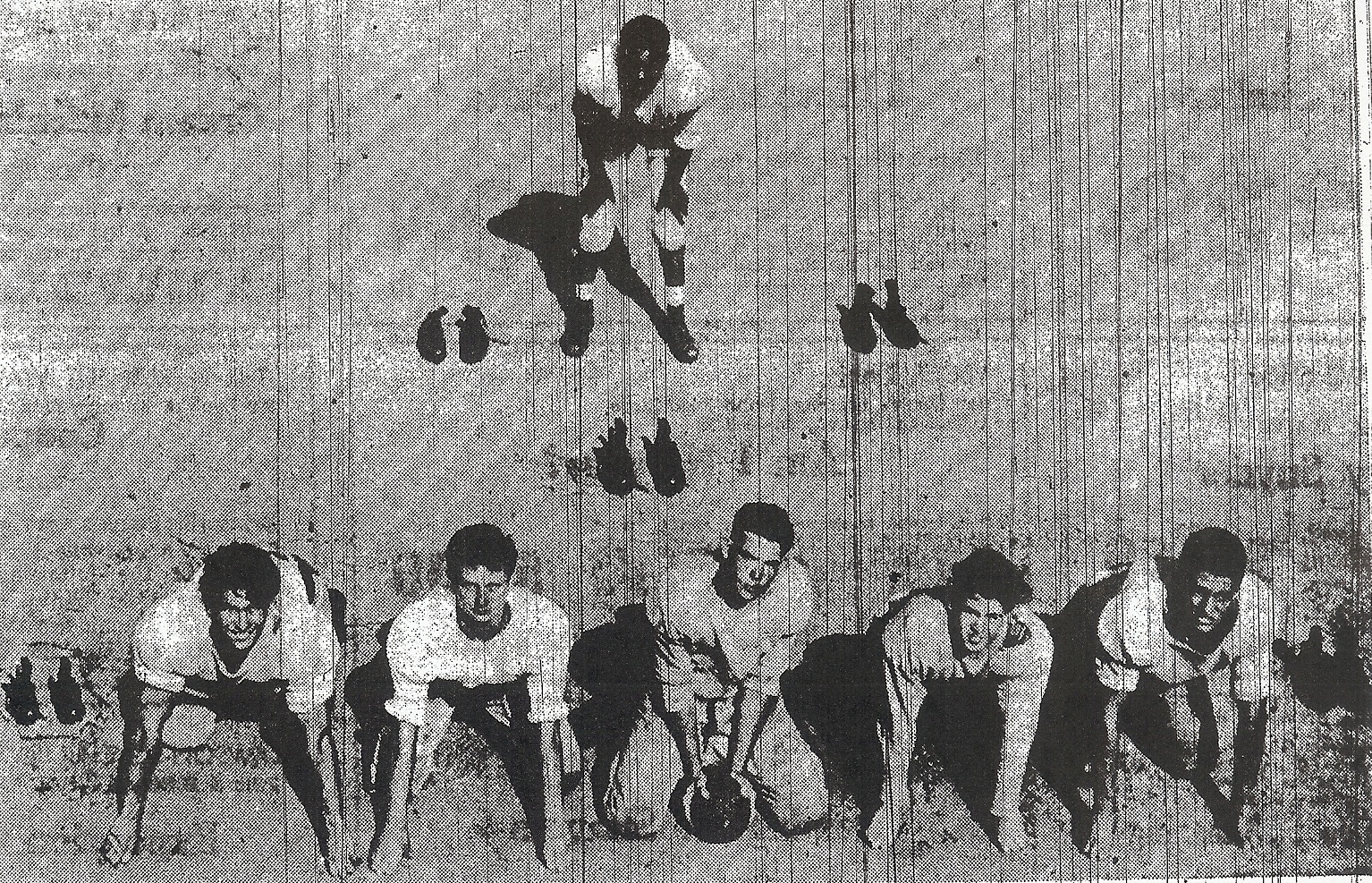
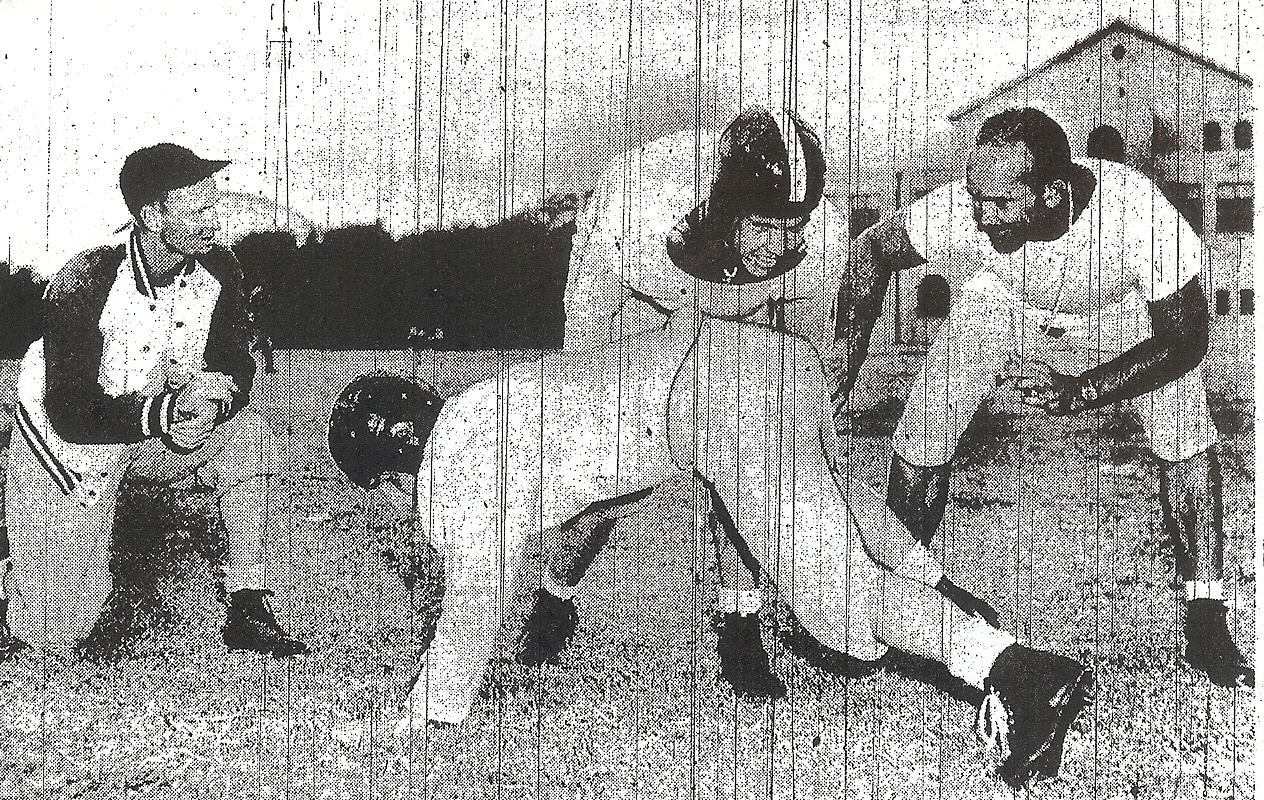
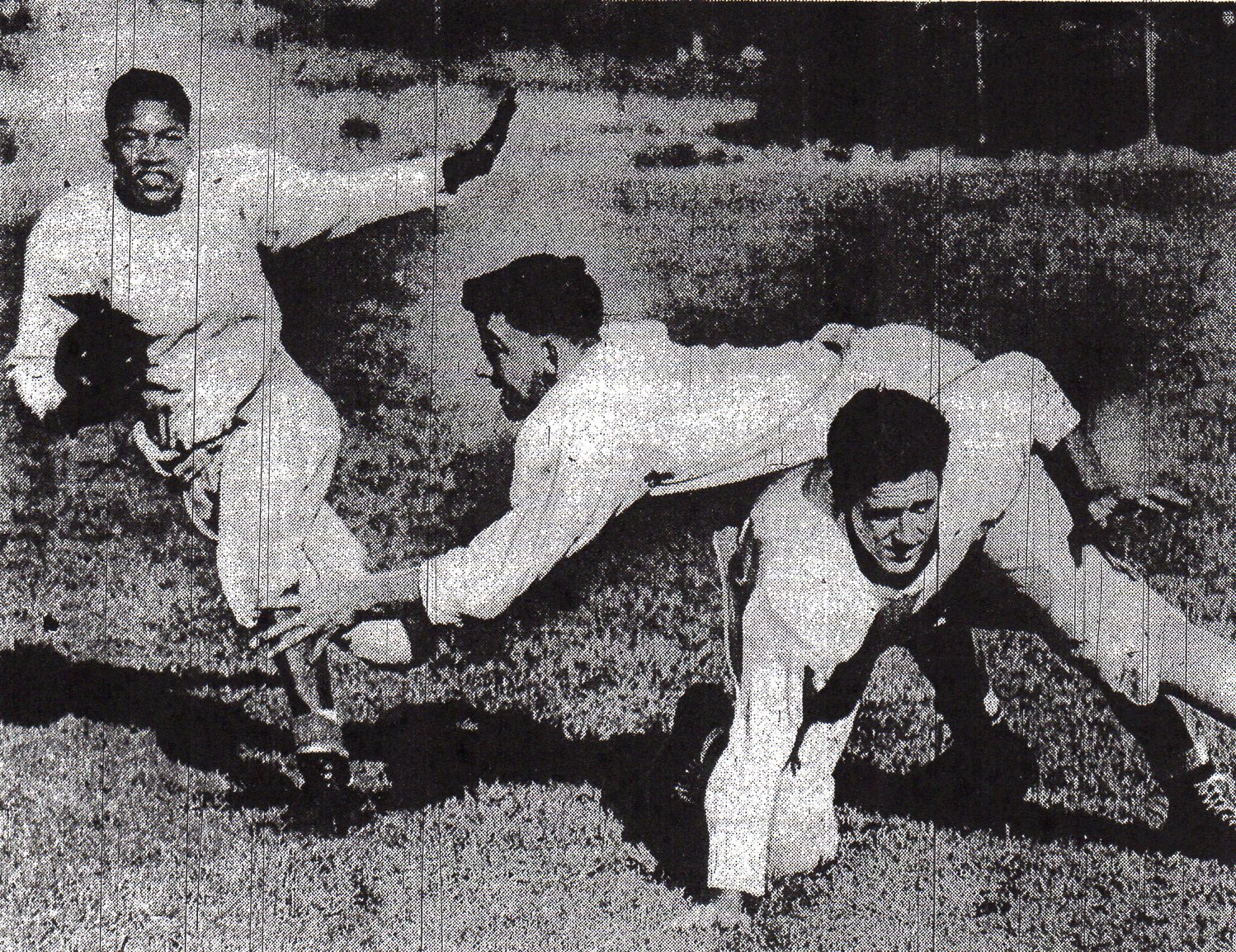

Hi,
I played for La Jolla High School’s football team under Gene Edwards in 1964. I remember we finished the season with three way tie for third. Your list of records shows us in fourth place. Was there some way of figuring this differently than I remember? We were in the old Western League, Pt. Loma, Kearney, Claremont, Madison, and La Jolla. We lost to Pt. Loma, Claremont, and Kearney, but beat Madison and Mission Bay. Pete Seymore broke the poor QB’s arm in against Mission Bay. Pete went on to play at Stanford. So our league record was 2-3. Please clarify. The next season the Vikings took CIF so I guess we were a building year. Was fun though, and lots of memories. Now our field is named after Coach Edwards, who also was our wrestling coach.
Jim: I answered you on June 18. If you go to the “Football” menu on the home page and select 1964 and scroll to Clairemont, La Jolla, and Madison records you’ll see that I made those corrEctions, thanks to you. Gene Edwards was an excellent coach and a real gentleman. He started on San Diego High’s 1947 team that went to the Southern CaLifornia finals and was an all-Coast League lineman.
Thanks,
I found it after I sent the comment and noticed the correction. Three way tie for third sounds a little better than second to last. I looked and the following season, 1965, full of our junior teammates, had a much better season. They still meet for lunch each year.
One more correction. The 1964 Madison v La Jolla FB score was inverted. LJHS won 14-6 not Madison.
Was recorded correctly on the LJHS schedule.
Thank you, I made the fix on the score but it may not show for a few days. My webmaster will make the change when he returns.
I was an English teacher at San Diego High School 1964-1968 and was looking for information about a dear friend of mine, renowned baseball coach there and then at City College, Bernie Flaherty. Does anyone know anything about him? He lived on the beach at that time.
Margaret Sawyer, now Berthold, a retired lawyer living in the New Haven area.
Hope someone has some information about Bernie!
margaret.berthold@sbcglobal.
Bernie passed in the last year or so. I think he was 85 or 86. He ans his wife lived in La Mesa. I first met Bernie in the early ‘sixties when he had moved over from St. Augustine High and was coaching at San Diego high and i was a fledgling sports writer at the San Diego Evening Tribune. Bernie, besides being successful at San Diego High and at City College, worked summers as a pitching coach for major league baseball organizations. Bob Cluck, a 1963 graduate of the “old Grey Castle”, hired Bernie to first work for the San Diego Padres. Bernie would teach school until June and then embark on baseball’s “short season,” in which he coached for several team minor league affiliates. Bernie had cancer on six occasions and beat it back five times.
Bernie was married to Dianne for it must have been 25-30 years, or more. They had two children, a boy and a girl.
I have been meanning to ask and hope this is not an innconvenience. How did you find our site? Thank you, Rick Smith.
As always, these posts are a pleasure for me to read, thanks in part to the fact that I was the Sports Editor of The Russ the first semester of the 1963-64 school year. One of the most striking things in reading through the names was the number of high school athletes who returned after college to become prominent coaches and administrators. During my years at SDHS, Jerry Dahms was kind of the senior P.E. teacher after turning over the reins of the baseball team to Bernie Flaherty. To me, the fact that so many teams are now led by off-campus coaches with little interest in the schools, their students or history is a sad commentary on San Diego City Schools.
Well said, Jim. My sentiments entirely. Thanks for writing. P.S.: How are they biting at Wohlford?
Hi Rick, you’ll have a better chance of getting bit in the Lake Wohflord Bar and Grill! I really appreciate the work you guys put in to this and enjoy it greatly. When I saw the photo of a Doug Hunt from that 1946 team I sent it to Doug Hunt from the 1965 team. Doug was a year behind me from Brooklyn to Roosevelt and SDHS. He was on my Butchers Little League team of the Mike Morrow League and a terrific hitter and overall athlete. Had his knees not given out I’ve often wondered if he might have been the third guy from my Little League team to make the majors.
I was once interviewing Willie Stargell in the Pittsburgh Pirates’ dugout in 1969 or ’70 and he told he was a cousin of Doug Hunt’s. Dennis Maley and Doug were stalwarts on a 7-2 Cavers team in ’64. There weren’t very many good San Diego High football teams after Duane Maley retired, but this was a solid club. Weren’t you Rob Ortman’s buddy? He lives in Hawaii, retired. Where is Doug Hunt? And who were the other two that made the majors?
Rick, it was me at the Ortmans house when you were visting and I never knew if you were there to pick BO’s mind or scheme on Carol. Yes, Rob and I were friends from the time they moved to Golden Hill until long after when he moved to Modesto to teach. I was also friends with Dave when I came back from Humboldt State and was going to SDSU. I have corresponded with Rob in Hawaii where he and his wife have settled and he seems very happy. Not long ago I got a nice note from Carol which I think was about something I did or wrote. I forwarded the story to Doug Hunt who lives locally and seems to be doing well and Jim Sebastian who was the Ortman’s neighor to the east (Adairs to the west) and in the class of 65 with Doug. Jim loved your story and I have not heard back from Doug.
At that time Carol was hooked up with her future husband, Cy Perkins, who attended Missouri with Carol. I was lurking but I wasn’t going to take a shot. The Adairs, in the next house to the West, had three sons, Dean, Les, and Sus (sp?). One of them coached for years at Coronado. Interestingly, the father, Charlie Adair, (a fireman?) played for San Diego High in 1935 but had to quit in the middle of the season because he was over the age limit. He still made the all-Southern California third team as a center.
When I initially commented I clicked the “Notify me when new comments are added” checkbox and now each time a comment is added I get four e-mails with the same comment.
Is there any way you can remove me from that
service? Cheers!
This is a procedural issue for the author that we’ll fix. From now on he will keep the post Private, and make the post Public only until the final posting. This will limit the notification email only for the “final”, and not the preliminary versions.
Sorry for the inconvenience. If you still want to be removed visit the website and use your email address to modify your settings.
The Webmaster